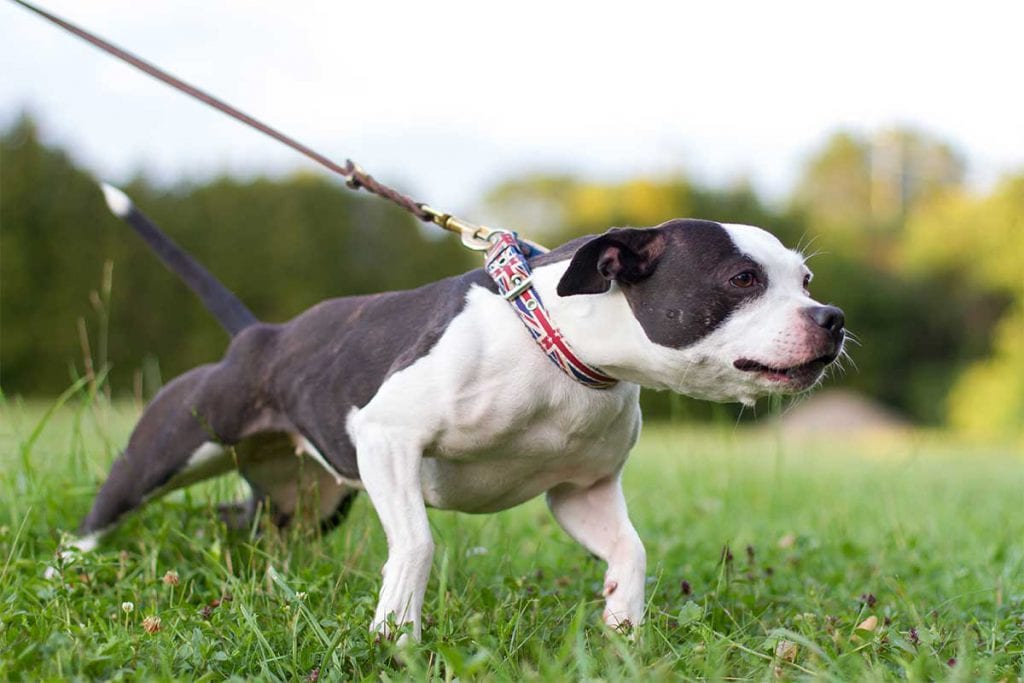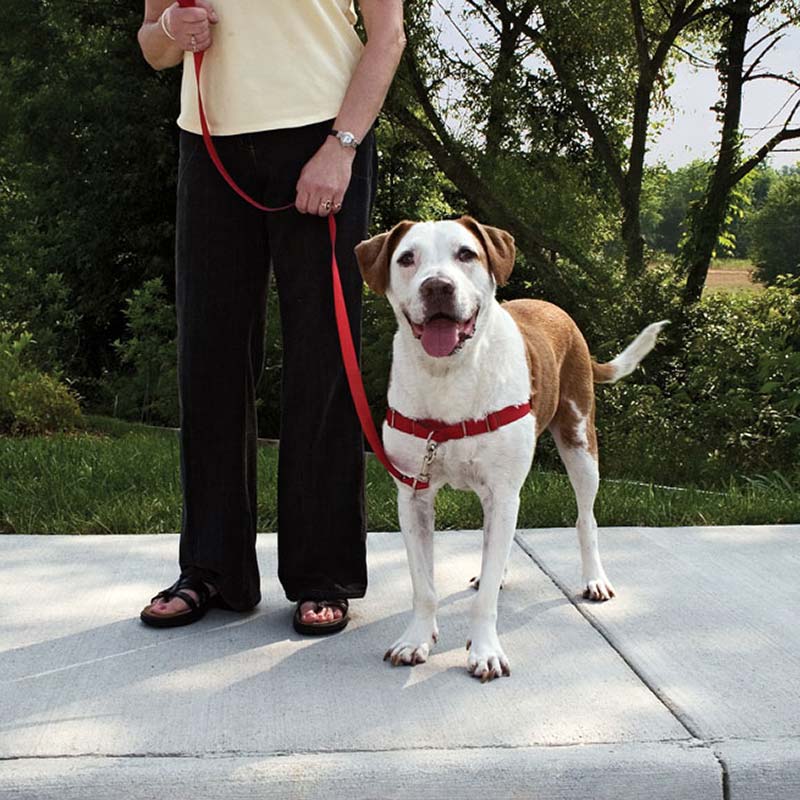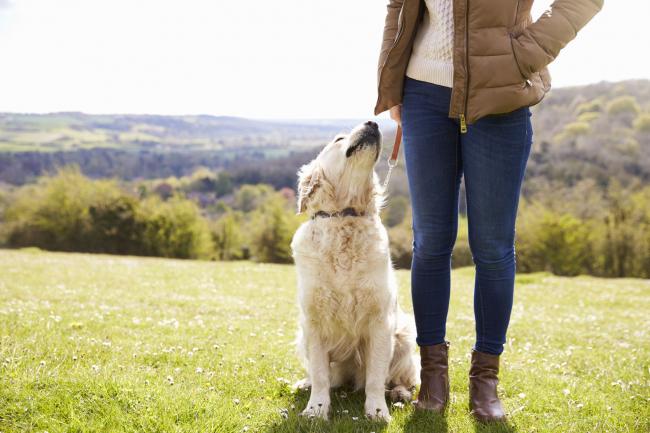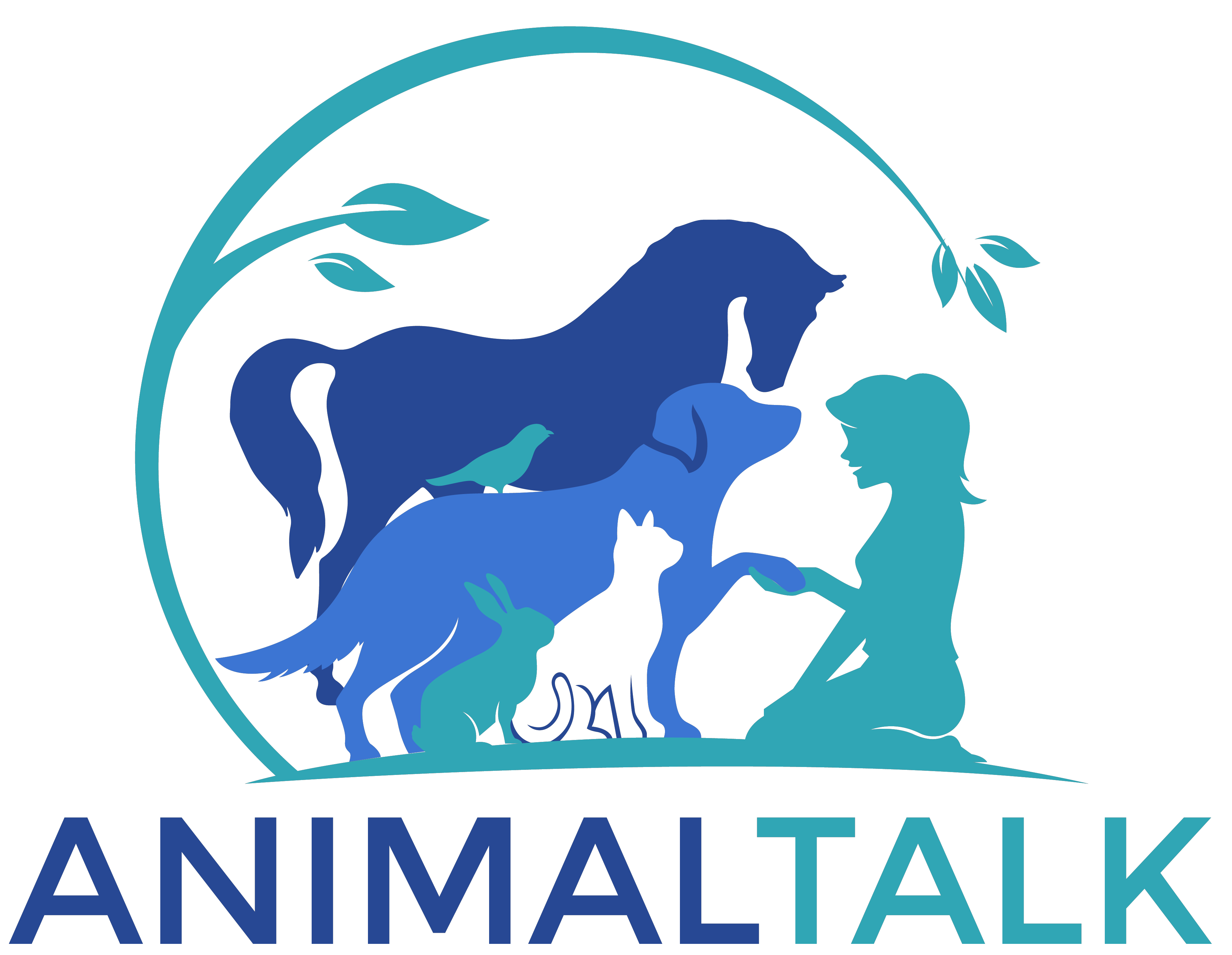No products in the cart.

Rebecca Marner from VIC, writes: ‘I have a 2 year old English Staffy named Max. He is really good when he is off leash – he always listens to me and is friendly with other dogs in the park and on our walks. But when I have to keep him on leash, he pulls non stop. I have tried a harness, but he seems to pull even more. I don’t want to use a choker chain on him, but I am running out of options. It makes any on leash outings unenjoyable for us both. How can I get him to walk beside me without pulling?
Teaching your dog good leash manners is one of the most important lessons you and your dog must master. With our canine companions living in a human world, there will be a lot of places where dogs must be on leash for their safety and yours. No one wants to be the dog owner that is pulled down the street by their charging dog. Your dog must understand that you are the leader, and they must trust your judgement when going outside the home.
A dog’s strongest instinct is working in a pack. They need to know who is the leader in the pack at all times, as this gives them stability and boundaries to work within the group. Surprisingly enough, your dog needs boundaries! They need to know what they can and cannot do when they are outside their home with you. When your dog is on leash, they give up control to you. They cannot defend themselves or protect you easily, so it is important that you make them feel safe everywhere you go. I take my two dogs Akeira and Savannah for café outings; they are on leash and they have learnt for years that they cannot pull on their leash. They may be little dogs, but they know they cannot pull ahead – I would not want them to pull their necks or hurt themselves. With the correct equipment such as your leash and harness, and some training, your dog will be walking beside you in no time.
EQUIPMENT
Firstly, we need to ensure you are using the right equipment for your dog. What are you attaching your lead to? Your dog’s collar? A choker chain? A harness? It is really important to understand which type of collar or harness is going to work for your dog. Over the years talking to many clients and their dogs, using a harness is the safest and most comfortable. If you attach their lead to their collar, you are risking an injury to your dog’s neck and spine; particularly with little dogs. Choker chains are a harsher method of getting your dog to walk; and I have not met any dog that likes it. When using a harness on your dog, they generally clip around your dog’s shoulders and chest. There are two main types of harnesses you can use: a harness that clips the leash on the back of your dog between the shoulders blades, and the harness that clips the leash at the front of the chest.
Harnesses that clip between the shoulder blades are great for dogs that weigh between 2kg-10kg. Small to medium dogs may pull but can be easily handled in this harness. It is also safer for smaller dogs so when you are pulling them along, you don’t cause them any injuries.
Harnesses that clip the leash at the front of the chest are great for dogs that weigh 15kg and higher. Dogs that carry a lot of their strength in their shoulders, chest and front legs are more likely to pull you more with a harness that clips at the back. It actually works in favour of their strength. By using a harness that clips at the front of their chest, you can simply steer your dog into another direction without putting any pressure on their body. There are a range of these harnesses on the market, it may take you trial and error to find the one that suits you. Many of my clients use the Gentle Leader EasyWalk Harness for their big dogs.

TRAINING
Training your dog to walk beside you without pulling is possible – there are many different methods to it, but there are a few that I have trialled and tested, and I can say have worked over and over again for my clients.
Begin with walking your dog from the house to the end of the driveway. Ensure you have a short, gentle but firm grip on your leash. When your dog begins pulling you ahead, immediately turn them around back towards the house. Walk back towards the door, and try again. Start walking towards the driveway, keeping your hand with the short grip of your leash near your dog. This time when your dog pulls, immediately turn your dog back towards the house and praise them for following you. You can give them a treat for following you towards the house. Then start walking towards the driveway again, and when your dog starts following you, praise them. Show them how happy you are that they followed you and keep going past the driveway this time. Go as far as your neighbour’s house and then turn around to go back home. Every time your dog follows you and doesn’t pull the leash, praise them and give them a treat if needed. Practice every day, and as your dog gets used to new rules, extend your walk further and further.
Always try to finish your training sessions on a high, and don’t push your dog more than 20 minutes. If it feels like too much hard work and you are not enjoying it, stop what you are doing and play a game together. Chase your dog, give them cuddles, anything that will break your tension and theirs. Then try again. We want to set your dog up for success – smaller more frequent wins are more successful than trying to push for the long big walk beside you.

The tricky part about dog leash manners is consistency. If there is more than one person that walks your dog, they all must be trained to walk your dog the same. If everyone walks the dog differently, your dog will get confused and blamed for being a ‘naughty dog’. Often when I am away teaching workshops, my husband Pete would take over the animals’ routine and walk the dogs. Pete is less strict than I am, so when I would arrive home my dogs would not listen and just run ahead! I would have to re-train the dogs again to walk beside me. If everyone knows the walking rules, your dog will always have enjoyable outings with everyone.
If your dog continues to lunge out, and you feel you are getting nowhere, your dog may have too much pent up energy. At this time I would take him to the backyard or to your front yard if it is fenced, and razz them up. Initiate a game of zoomies, play with a ball or play wrestle together. Do whatever it takes to get your dog’s energy out and have fun doing it! When they have had enough, wait until your dog has calmed down and then try walking them beside you to the driveway again. You may find your dog will be more willing now since they have had a good play.
If your dog is still not progressing with your training, then I would consult an animal whisperer and a dog trainer. We can ask your dog how they feel about the situation, what isn’t working for them and what suggestions they have to help. Then once we have a clearer understanding between you two, we can consult a dog trainer to help you tweak your training so that your dog understands what you want from them.
At the end of the day, your dog does want to please you. They love going for outings just as much as you do, but if no one is happy they won’t enjoy it either. Once there is understanding, clarity of commands and consistency, you will be able to take your dogs everywhere!
